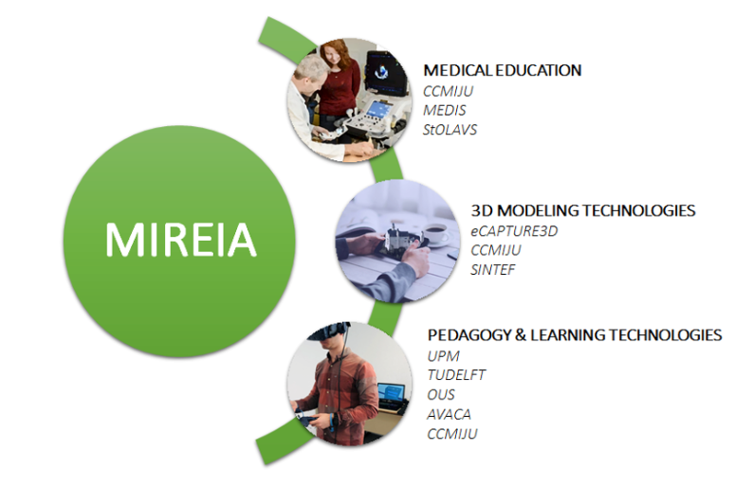Training in medicine has evolved rapidly in recent years. The path to becoming a medical professional is long and demanding. Students must acquire advanced anatomical and theoretical knowledge during their university medical training, as well as a series of technical and non-technical skills during their residency and postgraduate stages.
The process of becoming competent in the medical field begins during the first years of the medical career, in which theoretical knowledge is traditionally imparted through face-to-face classes, anatomy books and other static theoretical content. However, there is a lack of interactivity, appeal and realism to these earning contents, which are sometimes far from real clinical situations. Once the medical training has been completed, the students move to the residence under guided tutorship to develop e.g.: their surgical skills. This Halsted-based training model is gradually being replaced by structured training programs to optimize residents' learning curves, time and efficiency.
As a result, training programs are moving towards the integration of new training methods and tools, as well as structured learning programs focused on patient-free environments. In this sense, the introduction of innovative technologies based on 3D models such as extended reality (virtual, augmented and mixed reality) and 3D printing carry the potential to create engaging learning contents tailored to the needs of students in the early stages of medical/surgical education. These can be based on interactive and/or immersive learning content, personalized according to clinical reality to train specific technical and non-technical skills, facilitating the retention of knowledge and its subsequent transfer into actual clinical practice. The challenge is to make these technologies accessible to everyone and allow for an easy deployment of models as well as learning contents incorporating them.
Despite the recent popularisation of these methods and technologies, several challenges remain to be addressed in order to extract the full didactic potential of virtual models. The first one concerns model availability. There are no widely available technologies for quick and automatic generation of intracorporeal 3D anatomical models, making the task arduous and non-accessible to anyone without a background in medical image processing. This means that models must be obtained from third parties, and that personalization to specific training needs sought for the model is lost. The second concerns didactic usage. There are no accepted EU standards to exploit all these novel immersive technologies with pedagogical guidelines in medical training, seeking the enhancement of knowledge transfer to actual clinical practice. Finally, the third reason involves the scarcity of scientific evidence to support the validity of personalized models (whether virtual or 3D printed) as learning and training tools.
The European Alliance “MIREIA: Mixed Reality in medical Education based on Interactive Applications” aims to provide medical students and residents with a set of innovative tools and guidelines to access immersive, interactive and lifelike learning contents based on 3D models to support student-centred learning of basic technical and non- technical skills. All the guidelines and learning contents will be available through open access as part of the MIREIA repository, which will also act as a hub to share 3D models and learning contents. This new paradigm will help European institutions to bridge the gap between simulation training and real-life practice, reducing learning curves without compromising patient safety.

